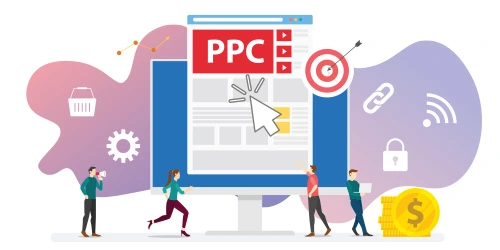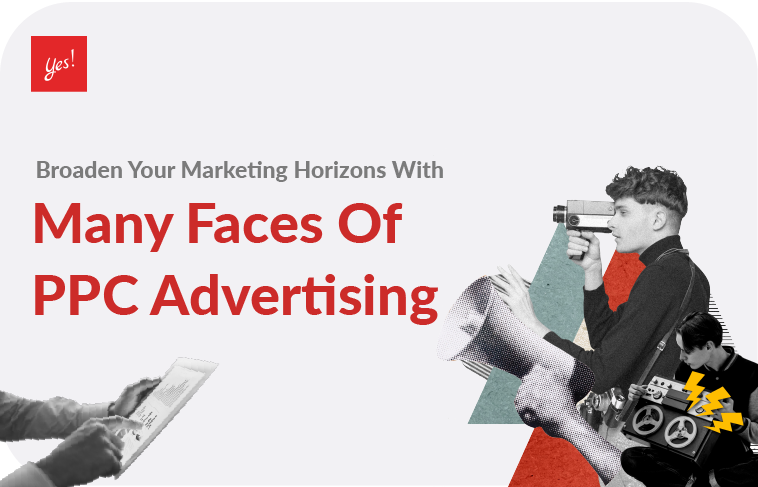PPC advertising is a versatile and dynamic form of online marketing, with different types that cater to various needs and goals. From search ads on search engines to display ads on websites, social media ads on platforms such as Facebook and LinkedIn, shopping ads on e-commerce sites, video ads on platforms such as Youtube, and even location-based ads, the potion for PPC advertising are vast.
There are different types of PPC advertising and their unique feature help you determine which type is the best for your business and marketing objectives. Whether you’re a small business looking to reach a local audience, or a multinational corporation targeting global marketing, PPC advertising has a type that can help you reach your ambition. So let’s dive in and discover the world of PPC ads type.
The types of PPC advertising
There are several types of PPC advertising:
- Search Ads
Search ads are the most common type of PPC advertising and involve placing ads on search engines like Google and Bing. These ads appear at the top or bottom of the search engine results pages when users search for specific keywords. The advertiser pays each time a user clicks on their ad, hence the term “pay per click.” Examples of search ads include Google Ads and Bing Ads.
The advantages of search ads include the ability to target specific keywords and demographics, as well as the ability to track and measure the success of the campaign through tools like conversation tracking and keyword performance reports. To ensure the success of search ads, it’s very important to use targeted keywords, write compelling copy, and continually optimize the campaign based on performance data.
- Display Ads
Displace ads are another popular type of PPC advertising and involve placing ads on a website and online platforms. These ads can take the form of banners, pop-ups, or other types of visual advertisements. Examples of display ads include Google Display Network and AdRoll.
The Advantages of display ads include the ability to reach a large, diverse audience, as well as the ability to target specific demographics and interests. Best practices for display ads include using eye-catching visuals, writing clear and concise ad copy, and targeting relevant websites and online platforms.
- Social Media Ads
Social Media ads are PPC advertisements placed on social media platforms like Facebook, LinkedIn, and Twitter. These ads can take the form of sponsored posts, promoted tweets, or other types of social media advertisements. Examples of social media ads include Facebook Ads and LinkedIn Ads.
The advantage of social media ads includes the ability to target specific audiences based on demographics and interests, as well as the ability to track and measure the success of the campaign through tools like engagemenet metrics and conversation tracking. To ensure the success of the campaign, it’s important to understand the unique features and audiences of each platform, as well as to create ads that are relevant, engaging, and visually appealing.
- Shopping Ads
Shopping ads are a type of PPC advertising specifically designed for e-commerce websites. These ads showcase products and their details, such as product name, price, and image, directly within the ad. Examples of shopping ads include Google Shopping and Amazon Ads.
The advantages of shopping ads include increased visibility for e-commerce websites, as well as the ability to showcase products directly within the ad. Best practices for shopping ads include creating eye-catching and visually appealing product images, writing clear and concise product descriptions, and targeting relevant keywords.
- Video Ads
Video ads are PPC advertisements that take the form of video content. These ads can appear on video-sharing platforms like Youtube or Vimeo, as well as on websites and social media platforms. Examples of video ads include Youtube Ads and Vimeo Ads.
The advantages of video ads include the ability to tell a story and convey complex ideas in an engaging and memorable way, as well as the ability to target specific audiences and demographics. Best practices for video ads include creating engaging and high-quality video content, using eye-catching visuals and clear audio, and targeting relevant platforms and websites.
- Location-based Ads
Location-based Ads are the type of advertising that uses the geographic location of a user to deliver targeted ads to their device. The advertisements are triggered by the user’s location, which can be determined through GPS technology on their mobile device, Wi-Fi signals, or other location-detection methods. These ads are designed to be relevant to the user based on their location and can be delivered through search engines, social media platforms, or location-based apps. Location-based Ads are useful for businesses with physical locations, such as retail stores or restaurants, as they allow them to reach nearby customers and drive foot traffic to their stores.

In conclusion,
To sum up, Pay Per Click (PPC) advertising is a powerful digital marketing strategy that offers a wide range of advertising options for businesses. The different types of PPC advertising provide businesses with the flexibility to target specific audiences, increase brand visibility, and drive conversations.
In today’s digital landscape, businesses of all sizes and industries can benefit from PPC advertising. Whether you’re looking to drive traffic, increase sales, or build brand awareness, PPC advertising offers a variety of options to help you achieve your goals. With the right strategy and implementation, businesses can see significant results from their PPC advertising campaigns.
————————————————————————————————————–
Article by – Yes Web Design Studio
For more information…
Facebook: yeswebdesignstudio
Instagram: yeswebdesign_bkk
Twitter: yeswebdesignbkk









